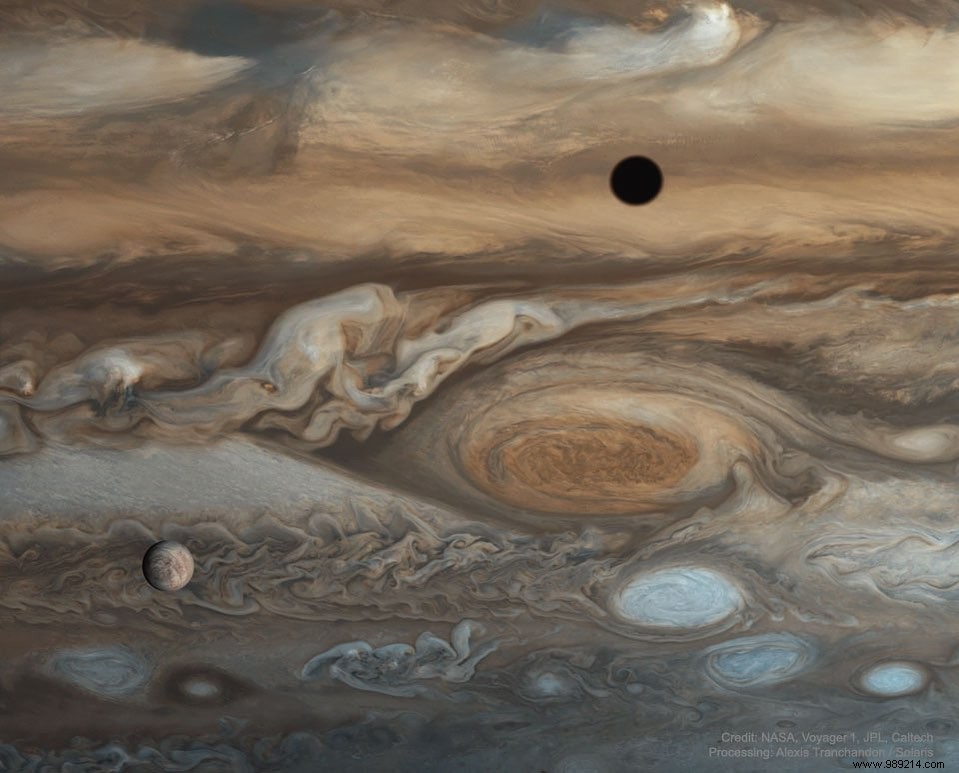Next December 21, Jupiter and Saturn will appear from Earth closer to each other than they have been since the Middle Ages. This is the perfect opportunity to get out the telescopes, of course, but also to focus on the larger of these two giants. What is Jupiter made of?
Jupiter is by far the largest planet in our system. It is mainly composed of gas , namely hydrogen (about 90% of its atmosphere) and helium (about 10% of the atmosphere). Traces of water vapor, methane, hydrogen sulphide, neon, oxygen, phosphine, carbon, ethane, sulfur and ammonia are also present, according to spectral analyzes of the planet.
This atmosphere, moreover, is not uniform. All of these gases are in effect "stacked on top of each other", forming multiple layers that extend downward.
Note that these layers are not necessarily related to the famous "bands" seen on Jupiter's surface. These are actually the result of the ultra-fast rotation of the planet combined with significant temperature fluctuations . For example, our planet rotates on itself at about 1700 km/h at the equator, against more than 45,000 km/h for Jupiter, which actually rotates on its axis in just under 10 hours (against about 24 hours for the Earth). In addition, the equatorial zone of Jupiter is also hotter than at the poles.

Jupiter thus appears as a sort of gigantic ball of very heterogeneous gas. Is it therefore free of solid surface? In other words, if you had the possibility of entering the atmosphere of the planet on board a spaceship, could you come out on the other side without encountering the slightest solid obstacle? The answer is no. Indeed, at some point, you would crash into Jupiter's core.
A few years ago some thought that Jupiter, like the Sun, resulted from the collapse in on itself 4.6 billion years ago years of a pocket of gas, thus creating a world of more or less pure hydrogen-helium. However, we now know that this is not true, thanks in particular to the American Juno mission, launched in August 2011.
By measuring how the speed of this probe was accelerated or slowed down by Jupiter's gravitational field, the researchers were able to deduce the distribution of mass in the depths of the Earth. planet. Using this method, they confirmed that Jupiter did indeed contain a nucleus.

Specialists still don't know exactly what it looks like this nucleus, so difficult is it to pierce the clouds of the giant.
Many, however, imagine a dense rocky center coated in melted ice, a layer of metallic hydrogen (a phase of hydrogen in which it behaves as an electrical conductor), itself coated with another layer of molecular hydrogen on top (image above). It is estimated that this core of Jupiter could have a mass of 12 to 45 Earth masses . In other words, it would represent between 4% to 14% of the total mass of Jupiter.